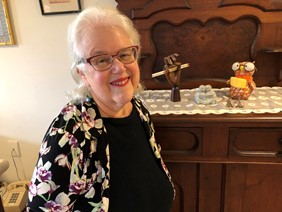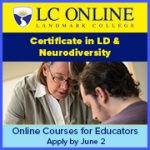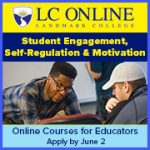Multidisciplinary research center on dyslexia. From 1995 to 2006, multi-generational family genetics, brain imaging, assessment, and instructional studies were conducted at the University of Washington. Probands (elementary and middle school students who qualified their families with multi-generational history of dyslexia for participation) were identified based on learning profiles (achievement measures) and phenotype profiles (behavioral markers of genetic and/or brain mechanisms) associated with dyslexia. Dyslexia is a word of Greek origin meaning condition of (-ia) impaired (dys) lexical (word) skills. Achievement measures of accuracy and rate of reading real words and pronounceable nonwords without meaning and of word spelling were administered to create learning profiles; and measures of phonological coding, orthographic coding, phonological loop, orthographic loop, and focused and switching attention were administered to create phenotype profiles. Based on research showing Verbal Ability is a better predictor of reading achievement than Nonverbal or Full-Scale Ability (Greenblatt et al., 1990; Vellutino et al., 1991), Verbal Ability was assessed.
Research Lesson 1 is that, contrary to the widespread belief that dyslexia is only a reading disability, dyslexia is also a spelling disability (Berninger, Raskind et al., 2008); and writing problems in dyslexia related to spelling have been under-identified and under-treated (Berninger, Nielsen et al., 2008).
Research Lesson 2 is that individuals with dyslexia may have impairments in phonological word form coding, orthographic word form coding, phonological loop (naming alphanumeric symbols or written words), orthographic loop (writing letters or words), and focused and switching attention in verbal working memory (Berninger, Raskind et al., 2008).
Research Lesson 3 is that dissociations of at least one standard deviation were observed between Verbal Ability (explaining word meaning, similarities, and knowledge about the world in oral language) and word reading and/or word spelling (Berninger, Raskind et al., 2008).
Research Lesson 4 is that effective treatment of word reading and spelling in dyslexia requires creating relationships among phonological, orthographic, and morphological word forms because English is a morphophonemic orthography (Berninger, Raskind et al., 2008). In sum, the myth that dyslexia is simply a phonological awareness and decoding problem was not supported.
Collaboration with programmatic research on writing. Cross-sectional and longitudinal studies of writing and its relationships with aural/oral language and reading and instructional studies of writing from 1984-1985, 1987-2008 in typically developing or at-risk writers identified some students with dysgraphia. A word of Greek origin, dysgraphia means condition of (-ia) of impaired (dys) graph (letter) production by hand. Their learning profile is characterized by impaired legible and automatic letter writing in alphabetic order from memory, legible copying of alphabet letters in sentences, and/or sustained copying of alphabet letters in a paragraph over 30 seconds, 60 seconds, or 90 seconds; but they did not have word reading problems (Berninger, 2009, 2020c). The impaired handwriting skills were not correlated with their verbal intellectual ability. The phenotype profile included weaknesses in orthographic coding (seeing and analyzing letters in written words in the mind’s eye), finger succession (planning and executing sequential finger thumb tapping), and orthographic loop (writing alphabet from memory) (Abbott & Berninger, 1993).
Research Lesson 5 is that when brains were imaged of participants with dysgraphia and with dyslexia, both groups differed from controls on spelling tasks but in different ways. The spelling problems of those with dysgraphia are due to struggles in writing the words and those with dyslexia are due to struggles with phonological-orthographic encoding.
Exploring the puzzle of reading problems not due to dyslexia. The students referred for reading problems who did not meet the research criteria for dyslexia were also investigated. In collaboration with a leading speech and language specialist, a third specific learning disability was identified—oral and written language learning disability (OWL LD)—characterized by preschool history of oral language delays, a learning profile of impaired listening comprehension, oral expression, reading comprehension, and/or written expression during the school years, and a phenotype profile of impaired morphology and syntax skills. See Table 1 in Silliman and Berninger (2011).
Research on persisting SLDs in upper elementary and middle school. In the continued work of the Multidisciplinary Learning Disability Center from 2011 to 2017, dysgraphia, dyslexia, and OWL LD were compared in students with persisting difficulties despite services at school in grades 4 to 9.
Research Lesson 6 is that these three SLDs have different genetic bases (Abbott, Raskind et al., 2017), behavioral and brain bases (Berninger, Richards, & Abbott, 2015), and instructional needs (Berninger & O’Malley May, 2011).
Collaboration with research project on twice exceptional students in math. In research on math talent (Robinson et al., 1997), students were identified who were twice exceptional—gifted with specific learning disabilities (see Busse, Berninger, Smith, & Hildebrand, 2001). See Berninger (2020b) for learning and phenotype profiles for dyscalculia; Berninger, 2020c, for learning and phenotype profiles for dysgraphia, dyslexia, and OWL LD.
Research Lesson 7 is that for students with dysgraphia, administer PAL II M (2007b) to assess whether students can write numerals legibly and automatically and provide instruction if necessary in writing numerals (Berninger, 2020b); for students with dyslexia, provide instruction in reading math word problems; and for students with OWL LD, provide instruction in math-specific vocabulary and listening to and understanding teacher talk during math instruction (see Berninger, 2020c).
Translation of Research into Practice by Multidisciplinary Teams in Schools
Just as multidisciplinary research teams can generate scientific knowledge, multidisciplinary teams in schools can translate that knowledge into evidence-based practice.
Practice Lesson 1 is that for students referred for struggles in listening comprehension, reading comprehension, oral expression, written expression, reading real words, decoding pronounceable nonwords, or spelling administer TLLS (Nelson, Plante, Helm-Estabrooks, & Hotz, 2016) and PAL II RW (Berninger, 2007a, 2020c); for students struggling with handwriting administer PAL II RW (Berninger, 2007a, 2020c); for students struggling with arithmetic administer the PAL II M (Berninger, 2007b, 2020b). If pervasive or specific developmental disabilities and other neurogenetic disorders or neurological injuries or medical conditions are ruled out (see Berninger, 2015; Silliman & Berninger, 2011, Figure 2) and assessment yields learning and phenotype profiles and developmental histories consistent with dysgraphia, dyslexia, or OWL LD, Silliman & Berninger, 2011, Table 1) SLD appropriate diagnosis is warranted.
Practice Lesson 2 is that multidisciplinary teams can implement screen-intervene models for prevention, problem-solving consultation for problems as they arise, and differential diagnosis linked to differentiated instruction for multiple specific learning disabilities using evidence-based lessons from the multidisciplinary research program (see Berninger, 2020a, 2020b, and 2020c).
Practice Lesson 3 is that students with specific learning disabilities benefit from instruction in the grapheme-phoneme direction for decoding (reading) and phoneme-grapheme direction for encoding (spelling) and also in morphology because English is a morphophonemic orthography. For instructional resources see the four Spell-Links Resources, Revised PAL Instructional Package (Berninger, 2020a), and Berninger and Wolf (2016, 2019). All these can be adapted for virtual instruction.
Acknowledgements
1. The research discussed in this article was supported by the following NICHD-funded grants on which the author was the Principal Investigator: (a) Defining and Treating Specific Written Language Learning Disabilities. NIH P50 Center for Multidisciplinary Learning Disabilities Research HD071764, 2011 to 2016 with one-year no cost extension to 2017; (b) Learning Disabilities Center: Link to Schools and Biology, 1995-2006; (c) Interventions for component writing disabilities, 2001-2006, with two years no-cost extension to 2008; (d) Interventions for component writing disabilities, 1995-2000, (e) Shannon Award, 1992-1994; and (f) Component processes in writing disabilities, 1989-1992.
Also discussed was research supported by the Department of Education (PI Nancy Robinson, Co-PI Virginia Berninger), Identifying and nurturing early mathematical talent, 1993-1996.
2. The author also acknowledges Dr. Monica McHale-Small, who invited this article, for all she has done as a multidisciplinary specialist in learning disabilities—school psychologist, school superintendent, and leader in a state dyslexia prevention program, and currently as President of the national Learning Disabilities Association.

About Dr. Berninger
Virginia Wise Berninger (Ph.D., Psychology, Johns Hopkins University) was a faculty member at the University of Washington, Seattle from 1986-2016, Tufts New England Medical Center, 1983-1986, and Harvard Medical School, 1981-1983. She was Principal Investigator of NICHD-funded research grants on specific learning disabilities, 1995-2006, 2011 to 2016, and on writing and related literacy and neuropsychological processes, 1989-2008; and co-Principal Investigator on a Department of Education grant on math talent and twice exceptional students with math talent and math disabilities, 1993-1996.
Her clinical psychology experiences in hospital settings included specific learning disabilities, developmental disabilities, and motor disorders. She has taught graduate students in school psychology and learning sciences and human development and elementary students in general education and special education in public schools.
References
Abbott, R., & Berninger, V. (1993). Structural equation modeling of relationships among developmental skills and writing skills in primary and intermediate grade writers. Journal of Educational Psychology, 85(3), 478-508.
Abbott, R., Raskind, W., Matsushita, M., Richards, T., Price, N., & Berninger, V. (2017, June 19). Patterns of biomarkers for three phenotype profiles of persisting specific learning disabilities during middle childhood and early adolescence: A preliminary study. Biomarkers and Genes, 1 (1), 1-10. An open access journal. doi: 10.15761/BG.1000103 https://www.ncbi.nlm.nih.gov/pmc/articles/PMC6407889
Berninger, V. (2009). Highlights of programmatic, interdisciplinary research on writing. Learning Disabilities. Research and Practice, 24, 68-79. Invited. NIHMS 124304 PM C2717633
Berninger, V. W. (2015). Interdisciplinary frameworks for schools: Best professional practices for serving the needs of all students. Washington, DC: American Psychological Association. http://dx.doi.org/10.1037/14437-002 Companion Websites with Readings and Resources. Written with an Advisory Panel.
Berninger, V. (2020a). Revised Instructional Package (for Revised PAL Research Based Reading and Writing Lessons, Revised Talking Letters Guide, Revised PAL Handwriting Lessons, Revised Guides for Intervention. Reading and Writing, Talking Letters Cards, Handwriting Cards). Pearson.
Berninger, V. (2020b). Revised User Guide for PAL II M (2007b), Pearson.
Berninger, V. (2020c). Revised User Guide for PAL II RW (2007a), Pearson.
Berninger, V., Nielsen, K., Abbott, R., Wijsman, E., & Raskind, W. (2008). Writing problems in developmental dyslexia: Under-recognized and under-treated. Journal of School Psychology, 46, 1-21. NIHMS 37383 PMC 2344144
Berninger, V., & O’Malley May, M. (2011). Evidence-based diagnosis and treatment for specific learning disabilities involving impairments in written and/or oral language. Journal of Learning Disabilities, 44, 167-183.
Berninger, V., Raskind, W., Richards, T., Abbott, R., & Stock, P. (2008). A multidisciplinary approach to understanding developmental dyslexia within working-memory architecture: Genotypes, phenotypes, brain, and instruction. Developmental Neuropsychology, 33, 707-744.
Berninger, V., Richards, T., & Abbott, R. (2015, published on line April 21, 2015). Differential diagnosis of dysgraphia, dyslexia, and OWL LD: Behavioral and neuroimaging evidence. Reading and Writing. An Interdisciplinary Journal, 28, 1119-1153. doi:10.1007/s11145-015-9565-0 A2 contains supplementary material available to authorized users: NIHMS683238 Publ ID 2615-04-21_0002 Released to PMCID 4553247
Berninger, V., & Wolf, B. (2016, 2nd printing 2019). Dyslexia, dysgraphia, OWL LD, and dyscalculia: Lessons from teaching and science, Second Edition. Baltimore: Paul H. Brookes. Also available as e-book.
Busse, J., Berninger, V., Smith, D., & Hildebrand, D. (2001). Assessment for math talent and disability: A developmental model. (Eds.). In J. Andrews, H., D. Saklofske, & H. Janzen (Eds.). Ability, achievement, and behavior assessment. A practical handbook. (pp. 225-253). New York: Academic Press.
Greenblatt, E., Mattis, S., & Trad, P. (1990). Nature and prevalence of learning disabilities in a child psychiatric population. Developmental Neuropsychology, 6, 71-83.
Nelson. N.W., Plante, E., Helm-Estabrooks, N., & Hotz, G. (2016). Test of Integrated Language and Literacy Skills (TLLS). Baltimore, MD. Brookes Publishing.
Robinson, N., Abbott, R., Berninger, V., Busse, J., & Mukhopadhyay, S. (1997). Developmental changes in mathematically precocious young children: Matthew and gender effects. Gifted Child Quarterly, 41, 145-158.
Silliman, E., & Berninger, V. (2011). Cross-disciplinary dialogue about the nature of oral and written language problems in the context of developmental, academic, and phenotypic profiles. Topics in Language Disorders, 31, 6-23. free access at http://journals.lww.com/topicsinlanguagedisorders/Fulltext/2011/01000/Cross_Disciplinary_Dialogue_about_the_Nature_of.3.aspx
SPELL-Links to Reading & Writing Curriculum, Second Edition, SPELL-Links Wordtivities, and Spell-Links Word List Maker Learning by Design, Inc. at www.learningbydesign.com
SPELL-Links WordUPI app from the Apple App Store, https://apps.apple.com/us/app/spell-links-wordup/id1118995038
Vellutino, F., Scanlon, D., & Tanzman, M. (1991). Bridging the gap between cognitive and neuropsychological conceptualizations of reading disabilities. Learning and Individual Differences, 3, 181-203.


